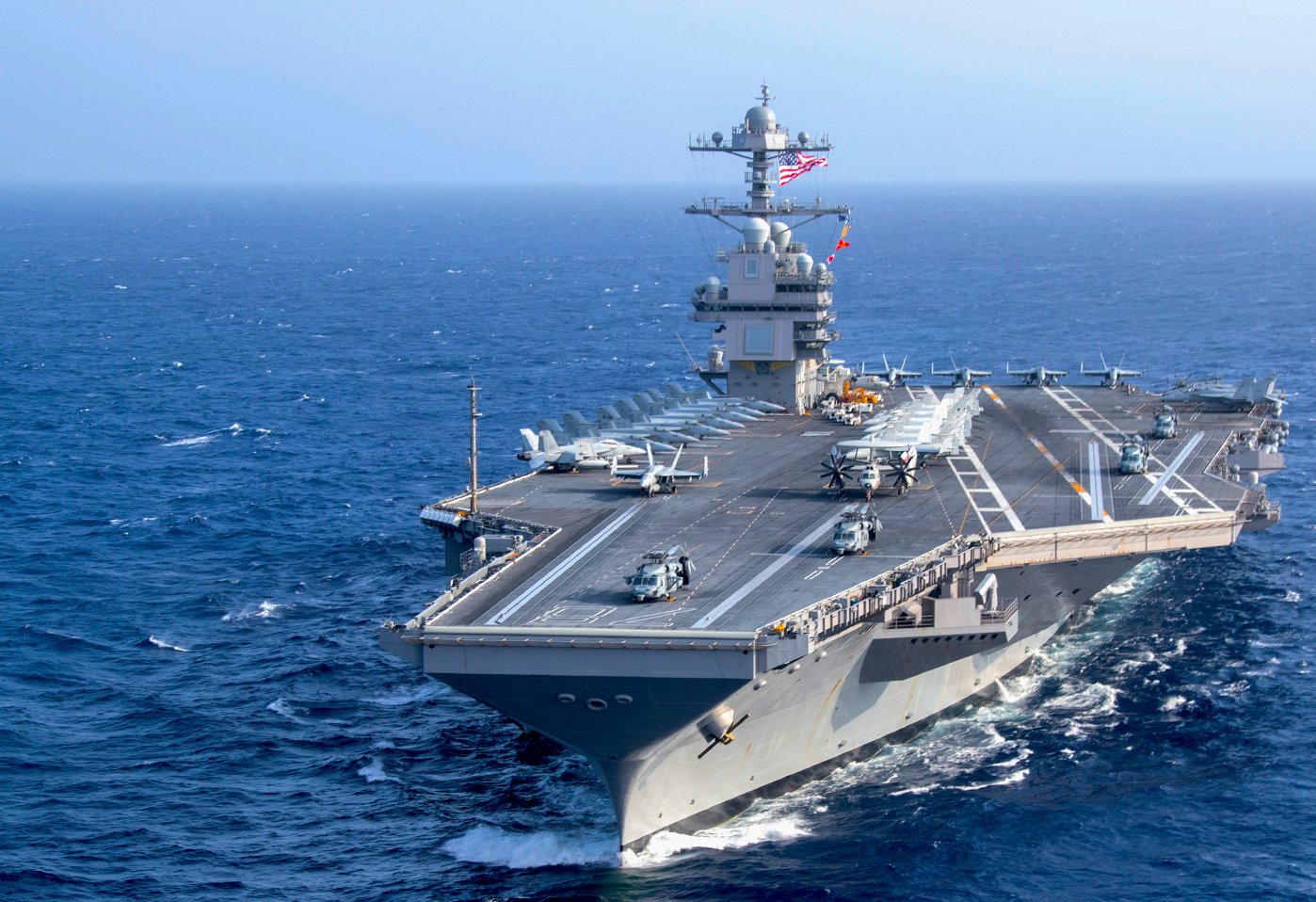
USS Gerald R. Ford (CVN-78) returned to port Sunday after its latest at-sea testing period with mixed results. While the carrier operated with the most complex air wing to date, the ship’s Electromagnetic Aircraft Launch System (EMALS) suffered a failure that prevented the carrier from launching planes for five days, the Navy announced in a Sunday statement.
On June 2, the crew discovered a fault in the power handling system that connects the ship’s energy-generating turbines to the EMALS power system.
“The root cause of the initial fault is still being reviewed to determine the causal factors. The fault appeared in the power handling system during a manual reset of the system before flight operations,” Navy spokesman Capt. Danny Hernandez told USNI News on Monday.
The carrier is in the midst of its post-delivery test and trial period, the 18-month series of tests before the ship’s shock trials and eventual deployment.
“After several days of troubleshooting and assessing a fault in the launch system’s power handling elements, embarked EMALS experts and Ford’s crew restored the system to enable the safe fly-off of the air wing on Sunday morning, June 7,” reads a statement from the carrier.
At no point did the failure cause a safety-of-flight issue with the carrier, and the ship’s company and manufacturer General Atomics were able to come up with an alternate procedure to launch the aircraft, USNI News understands.
“The ship’s response to these EMALS challenges underscores our ability to identify and to correct issues impacting flight operations quickly. That’s the purpose of the PDT&T phase,” Rear Adm. Craig Clapperton, commander of Carrier Strike Group (CSG) 12, said in a statement.
“The learning and improvement that results from pushing the systems will make the ship and air wing team better and more effective in future underway events.”
Ford commander Capt. J.J. Cummings stated that point to reporters in a phone call prior to the discovery of the EMALS power fault, saying that the crew and air wing hoped to push the launch and recovery systems to their limits during the testing period to find areas where engineers could make fixes now to make the systems more resilient for the maiden deployment.
Late last year, Ford completed its post-commissioning maintenance period, which ran several months long, and began a year and a half of workups ahead of the explosive full-ship shock trial and planned deployment in 2023 or 2024.
In addition to EMALS, the Navy is testing technology new to the carrier like the Advanced Arresting Gear and the Advanced Weapons Elevators.
“To date, Ford has conducted 3,480 catapult launches and arrested landings with EMALS and AAG,” reads a statement from the carrier.
“Additionally, during this execution of cyclic flight operations with CVW-8, Ford moved thousands of pounds of inert ordnance via Advanced Weapons Elevators to F/A-18 Super Hornets, employed during Close Air Support and air-to-ground training missions. Executing cyclic operations and arming aircraft with bombs from the ship’s magazines were firsts for the team.”





